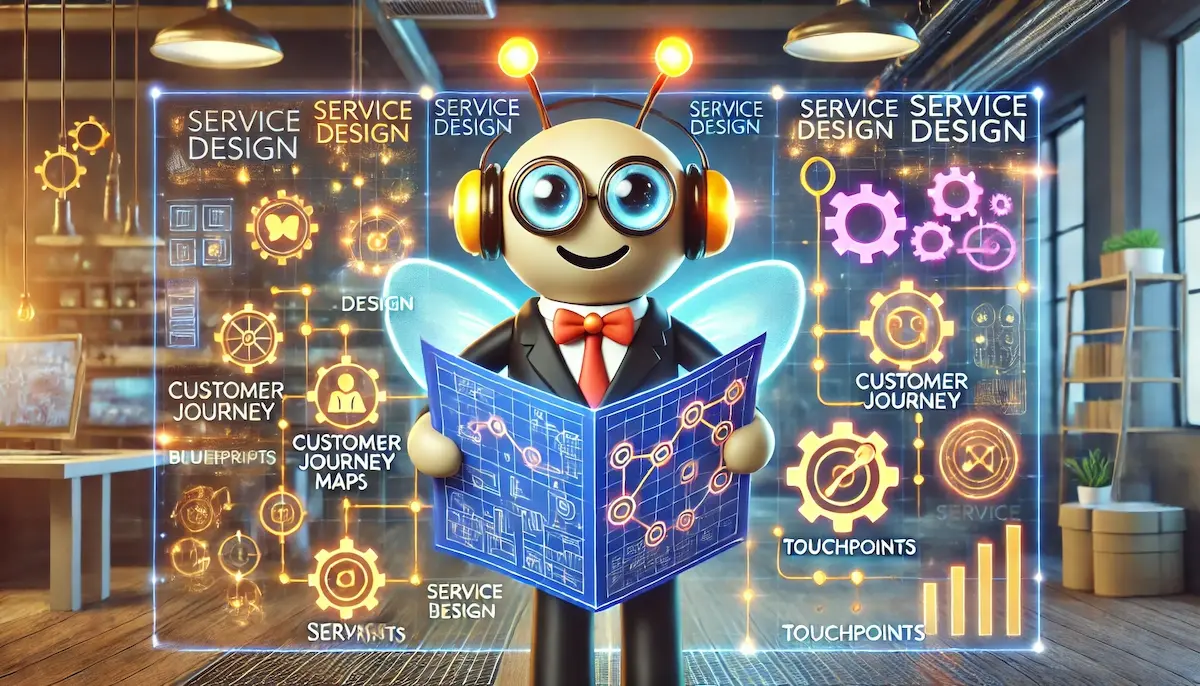Service design is a multidisciplinary approach to planning and organizing a company’s resources—people, props, and processes—to improve the quality of its services and enhance the customer experience. It aims to create services that are user-friendly, efficient, and enjoyable to use.
The Basics of Service Design
Service design involves several core principles and practices that ensure services are well-planned, user-centric, and effective. These principles help businesses create cohesive and seamless service experiences.
User-Centered Approach
At the heart of service design is the focus on the user. By understanding the needs, behaviors, and pain points of customers, businesses can tailor their services to meet those needs more effectively. This often involves direct user research, including interviews, surveys, and observations.
Co-Creation
Service design encourages collaboration among various stakeholders, including employees, customers, and partners. By involving everyone in the design process, businesses can gain diverse insights and foster a sense of ownership and commitment to the service.
Iterative Process
Service design is iterative, meaning it involves continuous testing, feedback, and refinement. Prototypes and pilot programs are used to test new service ideas and gather feedback before full-scale implementation.
Key Components of Service Design
Several key components are involved in the service design process:
Service Blueprint
A service blueprint is a detailed map that outlines all the touchpoints and interactions a customer has with a service. It includes both the front-stage (customer-facing) and back-stage (behind-the-scenes) activities, providing a comprehensive view of the service delivery process.
Customer Journey Mapping
Customer journey mapping visualizes the steps a customer takes when interacting with a service. It highlights key moments, pain points, and emotions throughout the journey, helping businesses identify opportunities for improvement.
Personas
Personas are fictional characters that represent different user types who might use a service. They are based on real user data and help designers understand and empathize with the needs and goals of different customer segments.
Touchpoints
Touchpoints are the various points of interaction between the customer and the service. These can include physical locations, digital interfaces, customer service interactions, and more. Each touchpoint should be designed to provide a consistent and positive experience.
Applications of Service Design
Service design is applied in various industries to enhance the customer experience and streamline service delivery.
Healthcare
In healthcare, service design can improve patient experiences by redesigning processes in hospitals, clinics, and telemedicine platforms. It focuses on creating seamless and empathetic interactions between patients and healthcare providers.
Retail
Retailers use service design to create cohesive shopping experiences across online and offline channels. This includes designing user-friendly e-commerce websites, efficient checkout processes, and personalized customer service.
Banking and Finance
Banks and financial institutions use service design to simplify complex processes, such as loan applications and account management. By making these services more accessible and user-friendly, they can improve customer satisfaction and loyalty.
Public Services
Government agencies and public services utilize service design to make their services more efficient and accessible to citizens. This can include everything from improving the experience at a local DMV to streamlining online tax filing systems.
The Future of Service Design
The future of service design is bright, with advancements in technology offering new possibilities for enhancing service experiences. Emerging trends such as artificial intelligence (AI), big data, and the Internet of Things (IoT) are likely to play significant roles in shaping the future of service design. These technologies can provide deeper insights into customer behavior, enable more personalized services, and create new opportunities for innovation.
Blockfine thanks you for reading and hopes you found this article helpful.
